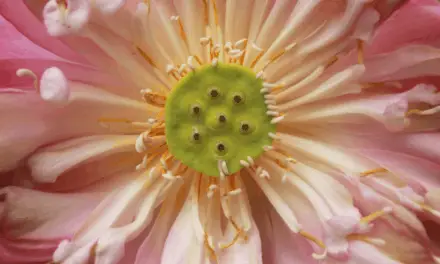Vincas are gorgeous trailing plants with stunning blooms that look fantastic flowing out of window boxes, hanging baskets, or flower pots.
You can also plant them in the ground to provide beautiful, colorful ground cover.
But they are an invasive species and will begin to take over your yard if left alone.
Vinca is easy to care for but can be a little picky when it comes to watering.
And if you don’t quickly get to grips with how much water these plants like, they will soon let you know by their posture.
Table of Contents
Why Is My Vinca Plant Drooping?

A very common cause of a drooping vinca plant is a lack of water.
These plants can dry out quite easily, and when they do, they will let you know they are thirsty by drooping quite dramatically.
Annual vinca is a tender perennial and prone to drooping when it doesn’t have enough water traveling up its vascular system and to its foliage.
However, some less common causes may be worth looking into.
Alternatively, drooping could indicate that the plant is root-bound, its roots are being attacked by a fungus, it is suffering from transplant shock, or that its roots are rotting.
Let’s look a bit closer at how you can solve these issues.
Lack Of Water
Probably the easiest problem to correct, lack of water is fairly common for vinca plants, especially if they are growing in small pots.
They are likely to dry out when the weather gets warm, and will quickly droop and die if you don’t give them a drink.
Make sure you check on your vincas daily when the weather is hot, and provide a drink whenever they are starting to look dry.
Check the soil around them has dried out, and if they are drooping, give them some water.
During summer, your potted vincas may need to be watered as often as daily, especially if the soil is loose and not holding onto too much water.
Try Not To Let Them Get Too Hot
If you are growing vincas in a container, you should also make sure that it isn’t getting too hot.
This depends on where you are located, but remember that a hot container will cause a plant to dry out faster, and it could also damage the roots if it gets really hot.
These plants do not like being warm around their roots.
Move vincas that are in containers to shady spots and keep them cool in the summer heat to prevent them from drying out or cooking.
And when the weather is cooling down, you may want to repot them into a denser potting mix that holds onto more water.
Related Article: Why Is My Flapjack Plant Curling? (And How To Treat It)
Rotting Roots
Unfortunately, vincas are quite prone to root rot.
This can be caused by poor drainage; although they do like to be well-watered and tend to grow near water naturally.
If your plant is constantly sitting in waterlogged soil and rarely dries out, it is at serious risk of root rot.
When watering, allow the top inch or two of soil to dry out before you give more water.
Inspect The Roots
If you inspect the plant’s roots and they are smelly, dark, soggy, and break easily in your hands, it’s no surprise if the plant is starting to droop, because it’s dying!
Vinca roots should be a cream color and firm beneath your fingers.
You will need to quickly take action to improve the soil, digging in draining material or planting your vinca in a pot where you can better control the conditions for it.
Even if the roots don’t rot and the plant manages to survive, the improper growing conditions will encourage fungi to attack it, and vinca plants are sadly vulnerable to this sort of thing.
Root rot can be caused by any of the fungi discussed in the next section or by too much water, or a combination of both.
Watch out for leaves turning yellow, which is one of the first signs of over-watering.
Fungus Attack
Four of the common fungi that attack the plant’s roots are:
- Rhizoctonia.
- Phytophthora.
- Pythium.
- Thielaviopsis.
These will all cause root rot.
There is little you can do to stop the spread as they tend to be dormant in most soil, but by providing your plant with good growing conditions, you will minimize the threat from fungus Infections.
Poor drainage and over-watering are key triggers for these fungi, so the first thing you should do is check that your vinca can drain and is not getting too wet.
Cut back on watering and let the soil dry out a bit, especially if your plant is somewhere shady.
To fight fungal infections, apply some fungicide to your plant about 7 to 10 days apart.
Add about two grams of fungicide to one liter of water, add to a sprayer and spray the leaves of your vinca plant.
If you think your plant is under attack from a disease and it has drooped to the point where you doubt you can save it, try taking some cuttings from healthy bits of the plant.
These can be re-potted in a suitable growing medium and kept indoors until they are large and healthy enough to replace your dead plants.
Transplant Shock
If you’ve bought yourself some healthy-looking vincas, planted them, and then discovered they’ve begun drooping – they may be suffering from transplant shock.
Annual vinca is a tropical plant and sensitive to soils at colder temperatures.
Only plant in soils with a temperature in the region of 65 to 70 degrees F.
If the soil is too cold this plant can easily get root rot and die.
Once planted in soil that’s not too much below 65 F – they should perk up within a few days.
Your Vinca Plant Is Root-Bound
If your vinca is allowed to become too root-bound it may begin dropping.
When roots take over the entire pot the soil is no longer able to hold onto enough water to keep your plant healthy and hydrated.
If this is the case, your vinca probably won’t thrive again until it’s repotted into a pot that’s about two inches bigger.
Final Thoughts
Vinca plants are susceptible to both over and under-watering, so you will need to check the soil moisture and pay attention to your plant, rather than watering according to a schedule.
Keeping your vinca moist but not soggy will help to ensure the plant is happy, and reduce the chance of it being attacked by fungus underground.




